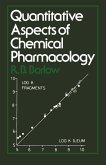Quinones are organic compounds that are formally derived from aromatic compounds such as benzene or naphthalene. During the conversion, an even number of (CH) groups are oxidised into (C=O) groups and necessary double bonds are rearranged to get fully conjugated cyclic dione structure1. Apart from this, organic molecules such as phenols and catechols having electron donating substituents are easily oxidized to quinones. The electron donating substituents increase the nucleophilicity of the ring and contributes to the large redox potential needed to break the aromaticity (quinones are conjugated but not aromatic). Many natural and artificial colouring substances (dyes and pigments) are quinone derivatives. They are next to azo dyes in importance as dyestuffs with particular emphasis on blue colours. Alizarin {1,2-dihydroxy-9,10-anthraquinone} (8), extracted from the madder plant, was the first natural dye to be synthesized from anthracene. This was used as the prominent red dye for dyeing textile fabrics.
Hinweis: Dieser Artikel kann nur an eine deutsche Lieferadresse ausgeliefert werden.
Hinweis: Dieser Artikel kann nur an eine deutsche Lieferadresse ausgeliefert werden.








